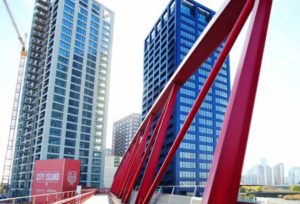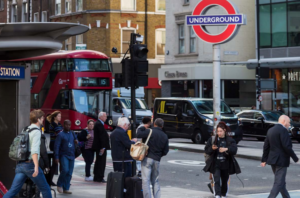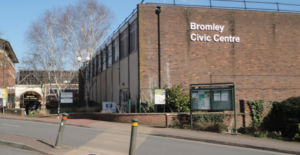Might there better ways to strengthen London's rail infrastructure than this massive and flawed project that looks as if it might never happen?
London’s population is growing faster than that of the rest of the country and is estimated to reach 9.5 million by 2026. More people means more pressure on connectivity – the capacity to get around the place – because cities only function as living, stable organisms when the people without jobs can get to the jobs without people.
London’s connectivity has improved substantially in recent years, with the extension of the Jubilee Line, the rebirth of the near defunct North London Line as one of the most reliable and well-loved on the network as part of London Overground, and, of course, there’s the imminent – although we’re not sure quite how imminent – arrival of the Elizabeth Line (Crossrail), which on its own will add some 10 per cent to London’s rail capacity. Next to emerge will be the extension of the Northern Line to Battersea Power Station, courtesy of a loop at Kennington.
But all this, welcome as it is, is not enough. Too many key central London stations now become so crowded that they have to be closed for several minutes at a time at peak hours simply on safety grounds, to prevent passengers being pushed onto live rails. One of the major proposals currently being worked up by Transport for London (TfL) with the support of the Department for Transport to address this capacity shortfall is the Chelsea-Hackney Line, dubbed Crossrail 2 by Ken Livingstone when he was Mayor in order to underline the need for a long term investment programme.
The idea for a line between the north east and south west of the city was first conceived in 1904, but quashed by rival rail operators. It was revived as a serious project in 1970, and a “line of route” was safeguarded following a 1989 study. When Boris Johnson succeeded Livingstone at City Hall he alighted on Crossrail 2 as his great legacy masterwork, and invited former transport secretary Andrew Adonis to lead a study on cost and deliverability.
Adonis duly reported in 2013 on what is now the scheme being taken forward by TfL, led by Dr Michèle Dix. The assumption underlying the Adonis work was that the line of route represented the optimum befit to London, both in terms of connectivity and cost. But sadly, in reality the scheme as currently proposed achieves neither.
In May 2018 the team published its latest update on route options. This recognised some of the most egregious errors. Examples include recognising that taking the line from Victoria to Clapham Junction with a station in the Kings Road is not only unpopular with residents but, much more importantly, fails to identify a station which would create a minimum of 5,000 new jobs or at least an equivalent number of new homes, which are the preconditions for the location of any new station.
A better option is to take the line from Victoria to Battersea Power Station, linking it with the Northern Line extension and bringing it within easy reach of London Overground stations before proceeding to Clapham Junction. Thirty years ago, the power station was producing power. Now the area around Nine Elms is a major growth zone, both in terms of homes and jobs.
The line is currently planned to link to Balham station, in order to connect with the Overground and the Northern Line. The original plan was for the line to connect to Tooting Broadway instead – an area in significantly greater need of better connectivity. The switch to Balham was apparently based on cost, although the calculations were never convincing. The move back to the Broadway makes much better sense and should have been acknowledged long ago.
The proposed link to Wimbledon threatened to devastate the town centre rather than benefit it. It desperately needs a rethink. And, believe it or not, the scheme now proposes the closure of a number of level crossings both north and south of the central area. These, incredibly, were originally included in the scheme and you can imagine the impact this will have on local communities, given the need for road diversions. I could go on, but until TfL turns “reviewing” these and other examples into actually changing the line of route the scheme itself remains distinctly sub-optimal.
And then there is the cost. Despite all the recent revelations about its overruns and delays, the Elizabeth Line is scheduled to cost around £18 billion. The current estimate for Crossrail 2 is £30 billion, and that’s at 2014 prices. At today’s prices it is closer to £34 billion, or nearly twice as much as the Elizabeth Line. TfL blandly asserts that half this cost would be borne by London (it’s actually a precondition of Treasury approval), but the mechanisms employed by Mayor Livingstone – a levy on new construction and a business rate supplement – would have a devastating impact on both the delivery of new homes and, in particular, the viability of retail businesses at a time when both are massive priorities for London.
Edmund Burke ruefully asserted that, “To tax and to please, no more than to love and be wise, is not given to men”. He was right then and right now, but until the current Mayor and his team agree about how Londoners are to raise £17 billion, Crossrail 2 remains a project everyone supports because it’s “a good thing” without there being any chance whatever of it seeing the light of day.
My advice? Go back to the drawing board and take a fresh, hard look at what the connectivity priorities for the city over the next 50 years should be. Look at much more affordable improvements, such as the extension of the Bakerloo Line south from Elephant & Castle down the Old Kent Road to New Cross, which would unlock opportunities for homes and jobs in one of the most deprived areas of the city.
Then look at whether a great new line really is the capital’s answer, or whether a series of less expensive incremental changes can address the challenge. And always bear in mind that, while London may well be the goose that lays the nation’s golden eggs, it needs to demonstrate more than ever why investment in the capital should trump investment elsewhere, in projects like the Northern Powerhouse. The current verdict on Crossrail 2 has to be case not proven. Must try harder.
Steve Norris is a former Conservative London Mayor candidate and a former transport minister (1992-97). He was a member of the Transport for London board during the mayoralty of Boris Johnson and is a founding partner of Norris McDonough LLP.









